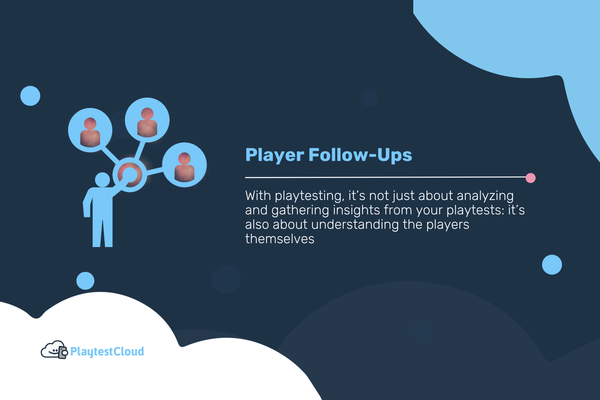As a game designer, chances are you're constantly thinking about how you can make sure that your games deliver a great experience to your players. One of the best ways to ensure this is to conduct a playtest: Just let a a group of players play your game and see what they have to say.
Here are five tips on how to get the most out of playtesting your game:
1. If you’re not embarrassed, you’re testing too late
It's easy to think that your game is not ready to be shown to anyone yet. Don’t fall into that trap! Test your game as early as possible, even if it is still full of programmer art and crashes every few minutes. Early in development is the best time to adapt your game to player feedback.
People will adapt their feedback to the kind of polish they see in a game. In an early prototype they are more likely to comment on the overall game mechanics whereas when a game is close to release they usually focus more on mere details such as jerky animations, misaligned textures, etc.
2. The ideal tester doesn’t know you…
…and has never played your game before.
People you know you will probably not be fully honest with you. Humans subconsciously rate work done by their friends or relatives more positive than that of a person they don’t know. Some people might be afraid that voicing a negative opinion on your work could affect your relationship.
Players who have played your game before will not give you the true ‘first-time player experience’. The first impression of your game is the most valuable, and you only have one shot at this. If you don’t manage to catch a player in their first few minutes of playing your game, you’ve usually lost them. For current mobile games, keeping 40% of players after one day is considered a great success, and most games don’t do that well.
Getting testers like this is hard, and I will write another post just on this topic. For early tests it’s usually good enough to ask friends. When you watch them play, you can usually tell whether they are having fun or not.
3. Learn much or learn accurately?
Think about how you will conduct the test. Usually, the more intrusive a test is, the more biased the results will be. Don’t expect someone who is playing under your supervision to behave like he normally would when playing the game at home.
However, watching people play your game in person is one of the best learning experiences you can get. You can see a player’s reactions and can ask him questions while he is playing.
A less intrusive method of testing that will give you more precise results is a ‘take-home-survey’. There players play your game at home over a longer period of time (usually a few days). During this time, they either fill out a questionnaire about the game or just write down their opinions.
Rule of thumb: When you’re early in development of a new feature, perform in-person tests. The benefit of learning a lot outweighs the harm of your learnings being somewhat imprecise.
4. Ask the right questions
It’s a good idea to prepare a few questions to ask the player.
When you ask a few players the same set of questions you will start to notice patterns emerging. If 4 out of 5 testers think that your game is too hard, it probably is.
5. Now do something with what you learned!
Take a look at the feedback you got. Some of it may well be irrelevant, while some is crucial - It’s up for you as a game designer to decide which is which.
For every feedback point you’ve collected, decide what concrete actions you’re going to take based on it. Even if you’re going to ignore a feedback point, make sure that it’s a conscious decision.







